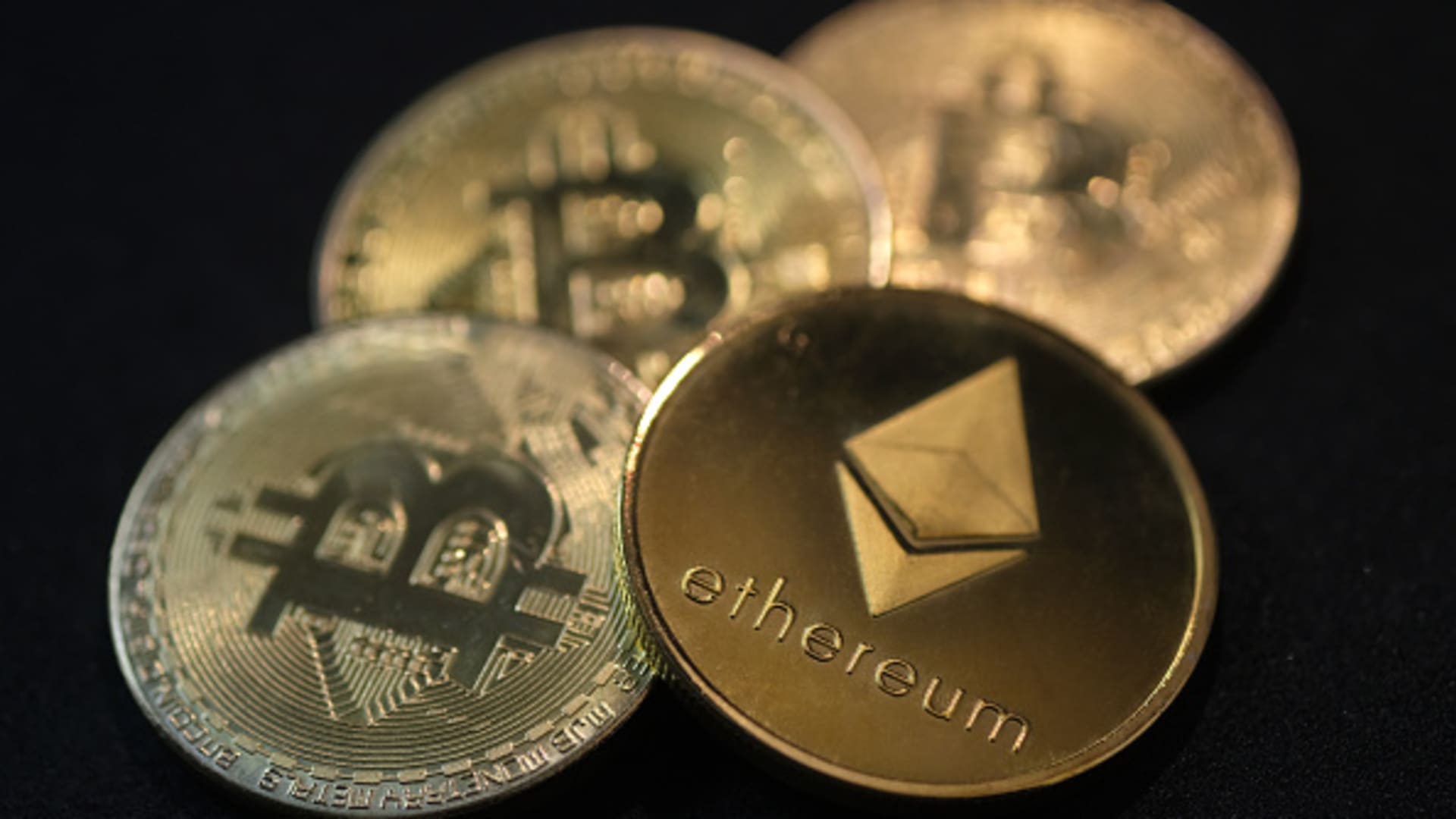Ether and bitcoin.
Yuriko Nakao | Getty Images
Bitcoin hit a new record late Wednesday as ether climbed even closer to its all-time high.
The flagship cryptocurrency rose as high as $124,496, surpassing its July record of 123,193.63, according to Coin Metrics. Ether rose to $4,791.19 overnight, edging closer to its 2021 record of $4,866.01.
Both coins took a hit Thursday, however, after July’s wholesale inflation data came in much hotter than expected. Bitcoin was lower by 2% at $119,704.09, while ether fell the same amount to $4,612.40.

Bitcoin hit a new record overnight, surpassing its July all-time high
The initial gains were sparked by Tuesday’s cooler-than-expected July inflation report, which had lifted investor optimism for rate cuts from the Federal Reserve at the end of its September policy meeting. The coins rallied with the stock market for two days. On Wednesday, the S&P 500 and Nasdaq also scaled new records.
For the week, bitcoin is on pace for a 2% gain, while ether has rallied more than 13%. Ether flipped bitcoin as the crypto market leader in June, gaining 85% since then thanks to heavy institutional buying, tightening supply and adoption from corporate accumulators – all under the backdrop of a friendlier regulatory environment for the crypto industry. Jake Kennis, analyst at Nansen, said the rally likely has more room to run given the flows remain strong.
“Bitcoin hitting a fresh all time high and ETH being on the verge of doing so means we’ve moved from speculative mania to a phase where institutional adoption, real-world integration, and global liquidity are driving price discovery,” said Ben Kurland, CEO at crypto research and trading platform DYOR.
“The fact that both assets are on the verge of breaking records in tandem signals broad market conviction, not just a single-asset rally,” he added. “Momentum this strong rarely burns out instantly, but it also tends to draw in latecomers who can fuel volatility. Right now the story is less about euphoria and more about validation. Crypto is graduating from ‘alternative’ to ‘essential’ in the global portfolio mix.”





